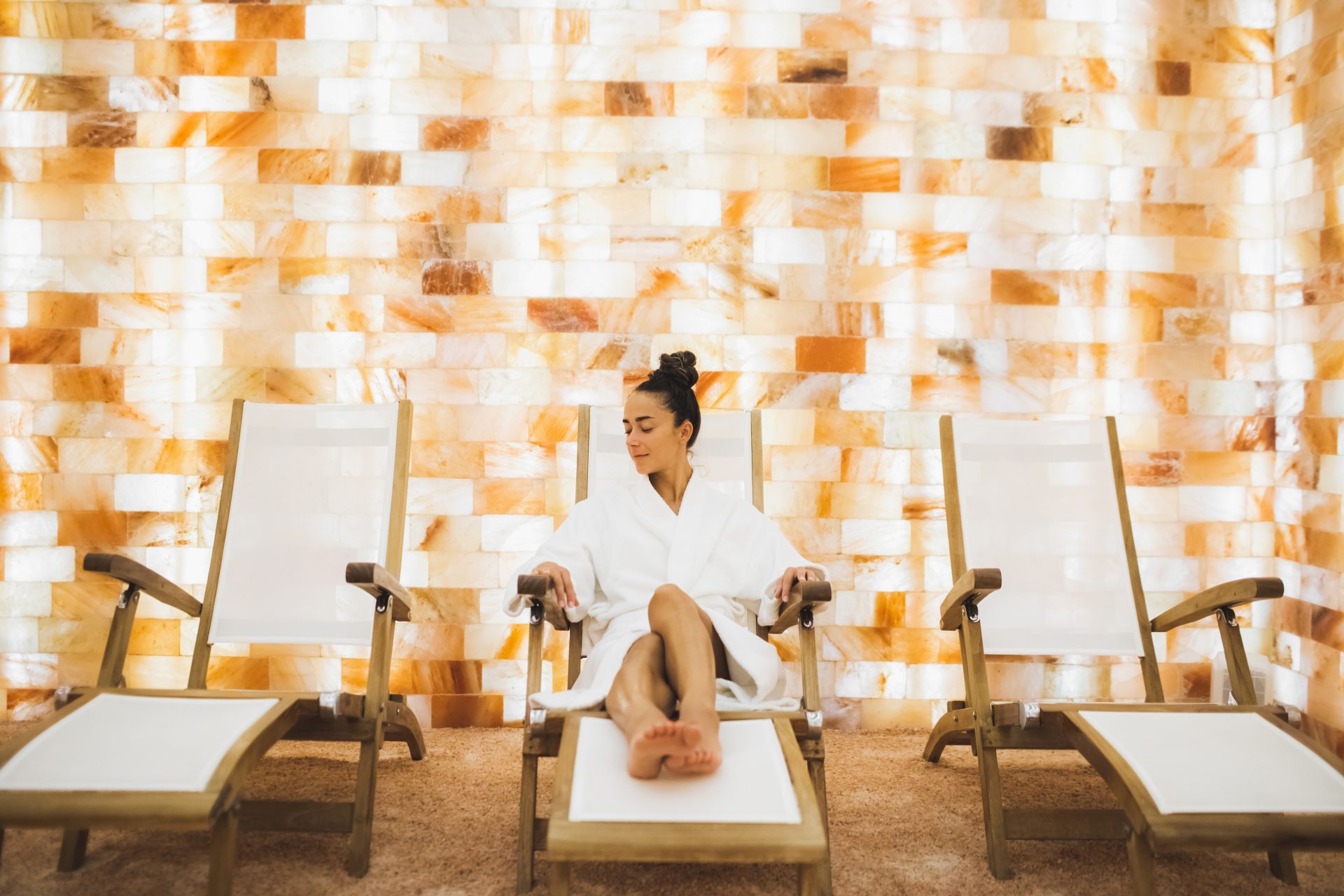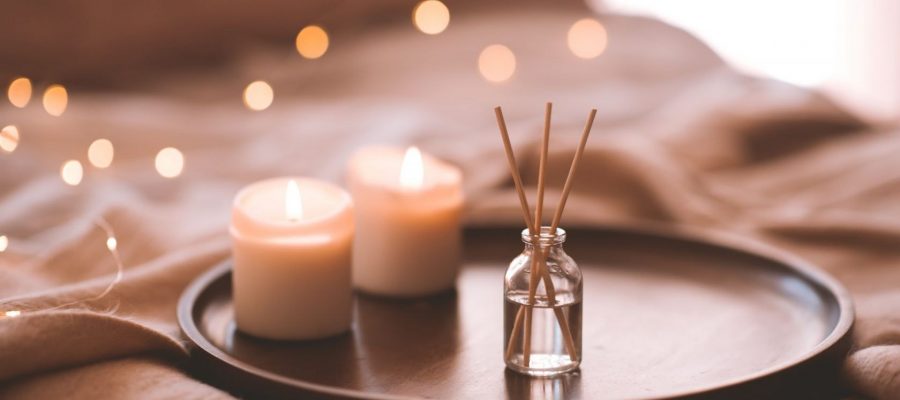This January, we’re on the search for quick, accessible hacks to kickstart 2023 in the strongest way possible. Today’s mood kickstarter: everything you need to know about creating an emotional escape room.
January always feels overwhelming.After the excitement and magic of Christmas, with its lazy afternoons spentwatching movies and nowhere to be, suddenly being thrown back into work, school and life is a shock to the system. As a highly sensitive person, my senses feel overwhelmed far more quickly in January; added to this, I’m recovering from Covid, which has made me hypersensitive.
In search of ways to soothe my jagged nervous system, I’m intrigued by the concept of an emotional escape room. According to chartered psychologist Catherine Hallissey: “An emotional escape room is a space you intentionally designate as a place to escape from daily life during times of emotional distress.”
“Emotional escape rooms are enormously healing and reviving,” agrees Clare Flaxen, a psychotherapist and founder of CF Mindset. “There’s a power to having access to a calm, grounded place. It helps regulate your nervous system and gives you the space to connect with the solution-focused, problem-solving nature of your brain. Everyone should have a little corner of their world that lets them feel like this,” she says.
Sound good? Read on to discover how to create yours.
What is an emotional escape room?
“Emotional escape rooms are a growing trend, and the timing of them coming after the past years of Covid lockdowns, uncertainty and an increase in working from home pressures is probably not a coincidence,” explains Flaxen. “People are looking for ways to find refuge again in their homes and in general people are becoming far more aware of their emotions and the need for prioritising emotional wellbeing.
“Emotional escape rooms are a way of creating a dedicated space (either an entire room or a space within a room) to help the user feel a certain way or manage intense emotions,” she says. “With so much disconnect and sensory overload in modern life, an emotional escape room can offer a place to reconnect, to be with your thoughts and feelings and to get back to a sense of grounded equilibrium within yourself that has so many wellbeing benefits.”
You may also like
Create your happy space at home with an emotional escape room – the interiors trend putting wellness first
An oasis
Hallissey agrees: “In our busy lives, it’s more important now than ever before to have a space to decompress and soothe emotional distress. We are taking in more information than ever so it’s essential that we have a space to down tools and reset our bodies and minds. Spending time in your emotional escape room should feel like an oasis in your busy life, a place to reset your body and mind and soothe your soul.”
They’re not really new
“If you think about it, these kinds of spaces aren’t new,” says Flaxen. “They’ve been around in different guises for centuries – from modern-day sensory rooms for small children in daycare nurseries to spiritual or religious spaces, such as chapels or temples, or in gardens designed to calm and soothe.”
What do they look like?
The beauty of an emotional escape room is its individuality. You can make it whatever you want it to be; you’re in control. We all have different ideas of what a sanctuary looks like – this is your opportunity to create it.
“The primary focus of your space should be on how you want to feel in it,” advises Hallissey, “so while something may look good, it also has to feel good and meet your emotional needs.”
“First of all, you need to decide what you want the purpose of the room to be,” adds Flaxen. “Do you want it to be a calming space? Or an energising, uplifting space? Do you want to get lost in an activity that gets you into a flow state of focus and allows you to both relax and recharge?”

How can we integrate them into our homes and lives?
“I recommend taking a sensory approach to creating your personal emotional escape room,” suggests Hallissey. “When you look around your space, do you feel relaxed? Does it feel cosy? Are the scents relaxing or uplifting? Are the sounds soothing?
“Everyone’s idea of an emotional escape room will vary, but there are a few key elements to consider when creating your own personal space,” she says.
You may also like
Emotional wellbeing: could getting to know our emotions be the key to better mental health?
Lighting
Start with lighting. “Maximise natural light as this has a positive impact on mood,” suggests Hallissey.“Supplement natural light with ambient light to create a cosy feeling.” Think fairy lights, candles, lamps and so on.
Physical space
Next, think about the physical space. “We know that physical clutter has a negative impact on wellbeing,” explains Hallissey, “so clear away as much as possible to create a space where you can rest.”
Colour
“Colour has a significant impact on our mood,” says Hallissey. “Consider using bright colours if you’re creating an energising space, or soft neutrals for a more calming vibe.”
Mood
“If your room or space has a purpose, like a yoga or meditation space or a tiny library, bring in elements that will assist with this,” suggests Flaxen. “Consider a comfy chair, a pile of pillows and soft furnishings. Comfort is queen in most emotional escape rooms.”
Air
“Ensure your space is well ventilated and consider plants that filter chemicals to clean the air,” advises Hallissey.
My love of a scented candle knows no bounds, and as well as casting a beautiful glow, the aromatherapy benefits are fabulous. Many luxury candles are blended with soothing essential oils, infusing your space with fragrance and calm.
Music
Consider whether you find playing music soothing – sometimes I prefer complete silence. If you do want some background ambience, “choose music that plays approximately 60 beats per minute,” advises Hallissey. “This is especially soothing. But simply playing any music you like has the power to uplift your mood.”
You may also like
Interiors inspiration: makeover your home with these 20 chic statement pieces under £1oo
What if I don’t have much space?
If your living space is more bijou than country pad, it is still possible to create a space that fosters your wellbeing.
“Even if you only have a corner of a room at your disposal, you can still cultivate a safe, comforting space,” reassures Flaxen.“There’s a wealth of inspiration out there in places like Pinterest, where you can spark your creativity and get designing a space to meet your emotional needs.”
Realistically, this doesn’t have to be an entire room. “In practice, people are more likely to take a room they already use and redesign it slightly,” explains Hallissey. “For example, you could create a spa effect in even the smallest bathroom with relaxing decor, soft lighting, candles and oils to help you unwind. Another option is creating a boutique hotel feel to your bedroom by clearing clutter and investing in beautiful sheets. Reading nooks are especially popular now, where the focus is on a quiet corner with a comfy chair, a reading lamp and a cosy blanket.”
A room of one’s own has never felt so good.
Images: Getty
Source: Read Full Article
